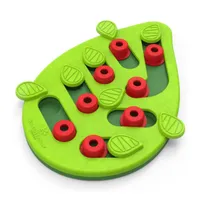5 reasons why your cat wants to play all the time (and how to keep them entertained)
Wondering why your cat wants to play all the time? Some of these reasons might surprise you!
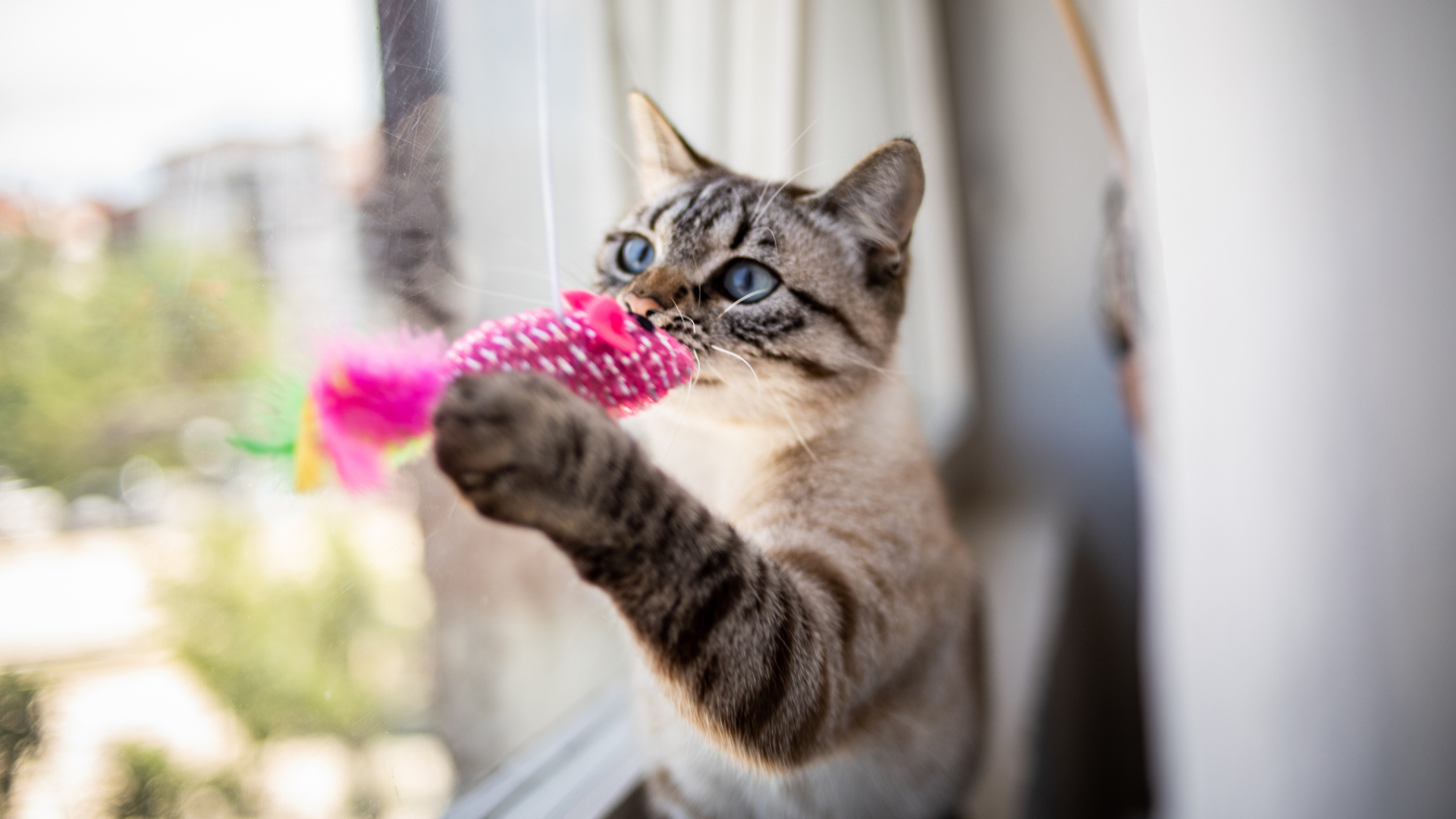
Does your cat want to play all the time? If the answer is yes, then you’re probably curious as to why this is, and you might be looking for some new ways to entertain them. Keep on reading because we’ve got you covered.
Cats are naturally playful creatures, so it’s not surprising if they’re super keen to play (especially when you’ve stocked up on the best cat toys). Whilst we’d love to spend the whole day playing with our fur babies, this isn’t always possible - and it might get a little tiring after a while!
Cat play is super important for your feline’s mental and physical health, and experts recommend two 20 minute sessions or four 10 minute sessions every day. If you’re new to cat parenthood, it’s worth learning how to play with a cat to ensure you get the most out of your sessions.
To help you get to the bottom of why your cat wants to play all the time, we’ve listed the most common reasons below. We’ve also called in Dr. Carol Osborne, an expert vet, for some top tips on keeping your cat occupied.
Common reasons your cat wants to play all the time
While some pet parents ask the question ‘why do cats sleep so much?’ others find themselves asking why their cat wants to play all the time! Most cats will sleep for around 15 hours a day as a way of recharging their batteries, but some cats, for a variety of reasons, may be more active.
For those felines that fall into the latter category, their waking hours are often spent wanting to engage in play. While bursts of play are completely normal, if your kitty is wanting to zoom around excessively, it’s worth being aware of some of the common reasons that may be driving this behavior.
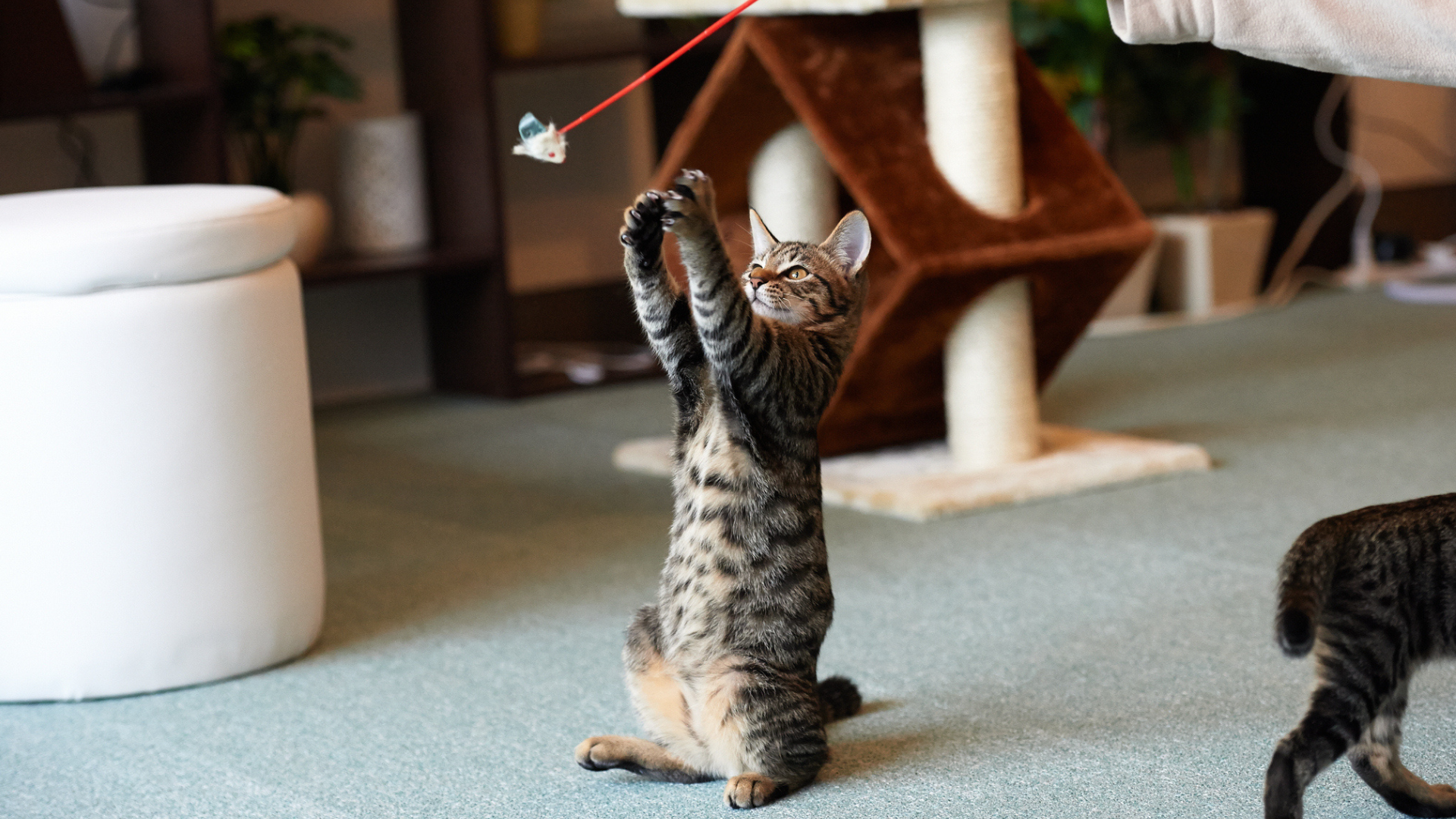
1. They’re bored
Get the best advice, tips and top tech for your beloved Pets
Is your cat bored? If you work away from home during the day then it’s highly likely that your cat gets bored during the day. This will often cause a cat to sleep more as a way of passing the time, which means they’ll be full of energy by the time you get home.
But boredom isn’t just confined to those times when you’re out of the house. If you work from home and don’t have a lot of free moments during the day to play with your cat, they’re also likely to become bored. It’s important to pay attention to boredom as it can often result in a range of unwanted behaviors.
2. They’re lonely
Unless they have another feline friend at home to keep them company, it’s likely that your cat experiences bouts of loneliness when they’re alone in much the same way that we humans do.
Having another kitty around can do wonders for your cat’s mental and physical health, so if you’re away a lot and you have the resources to cope with two fur babies, keeping them in pairs can be very comforting.
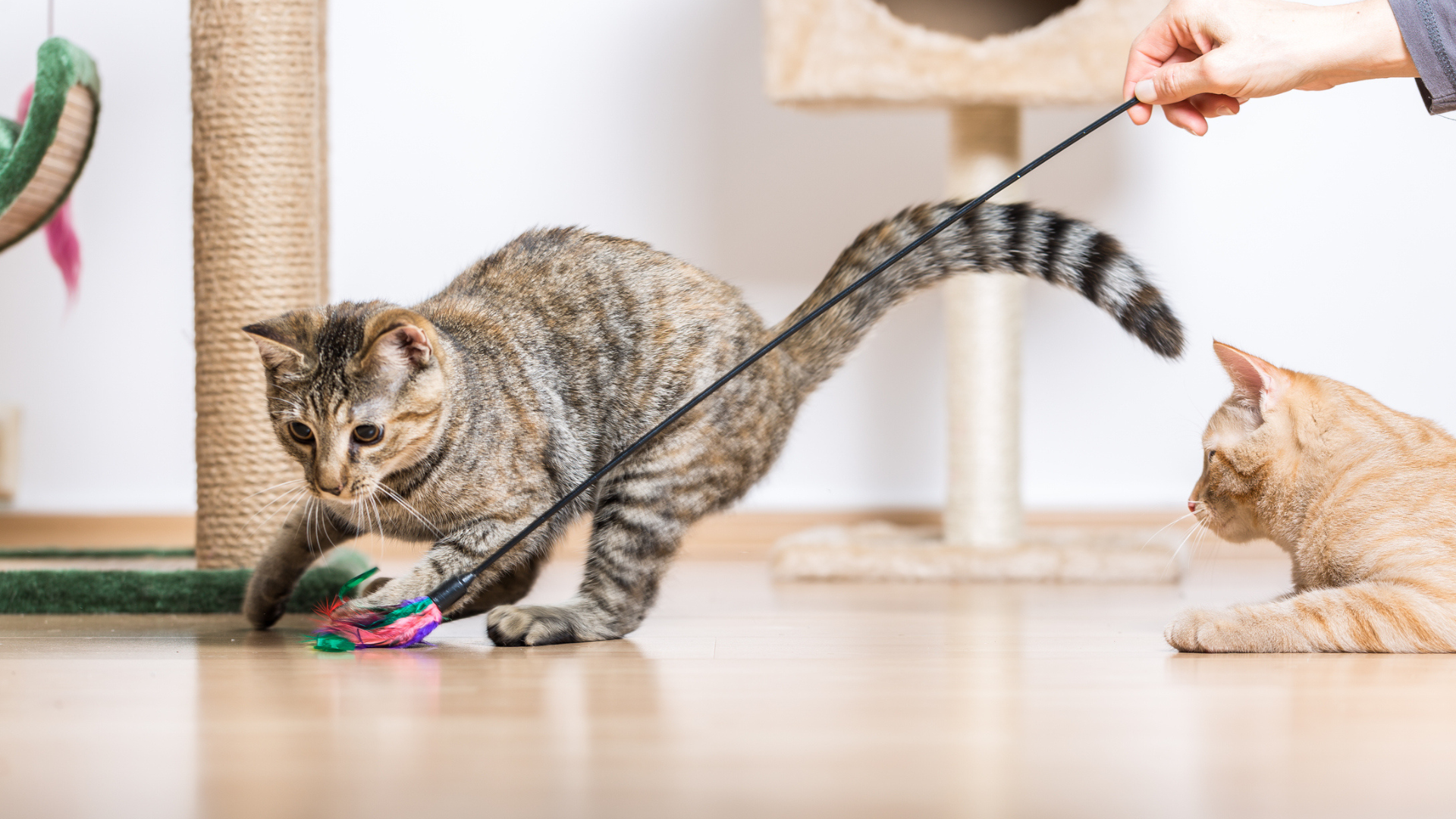
3. They want attention
Do you find that your cat is constantly bringing you their toys, pawing at your leg or running around hoping that you’ll chase them? Sometimes our feline friends can act in ways that remind us more of our canine companions, but this behavior is their way of telling you that they’re not getting enough attention and want you to play with them.
You’ll notice this a lot less in outdoor cats, who tend to be quite happy amusing themselves by heading off on all-day adventures. But if you have an indoor cat, they’ll be quick to tell you if they feel you’re not giving them the level of love and attention that they’re looking for.
4. It’s their breed
The most playful cat breeds have fun hardwired into their DNA, so if you have an Abyssinian, Bengal or Maine Coon, just to name a few, expect them to want to play a lot. While the laziest of our feline friends, like the Persian, will be happy to sleep the day away, high energy breeds need a lot of physical and mental stimulation in order to thrive.

5. They have a medical condition
A medical condition probably isn’t the first thing you think of when you’re trying to figure out why your cat wants to play all the time, but believe it or not, certain health issues can cause your cat to become more energetic.
The most common of these is hyperthyroidism, a condition where your cat’s thyroid produces more hormones than necessary which results in them becoming hyperactive. If your cat’s constant need to play is also accompanied by excessive thirst and urination, make sure you speak to your vet.
How often should you play with your cat?
Play is incredibly important for cats. “Constructive playtime for a cat is much-needed exercise,” explains Dr. Carol Osborne, DVM of Chagrin Falls Veterinary Center & Pet Clinic in Ohio. “It often improves cats’ mental health, lessening anxiety and destructive behavior.”
Exercise in the form of play is also wonderful for helping to reduce boredom, increase bonding between cats and their humans and it can also assist with maintaining a healthy weight, something that’s super important in indoor cats who tend to be at greater risk of obesity. It’s clear that there are a number of benefits to setting aside time to play, but how much time exactly?
Well, as with anything, moderation is key. We recommend two 20 minute sessions or four 10 minute sessions interspersed throughout the day. If your cat displays signs of tiredness or overexertion, such as panting, it’s important that you stop and allow them to rest.
“Generally if your cat walks away, is getting agitated, angry, stressed, too intense or becoming too stimulated, you should stop playing,” says animal behaviorist Russell Hartstein. “Several shorter play sessions tend to suit many cats better than one longer one.”

Ways to keep your cat occupied
There are going to be times when you’re available to play with your cat and other times when you’re not. To help you with both of these scenarios, we’ve put together these handy tips for ways that you can keep your cat occupied.
1. Invest in some interactive cat toys
The best interactive cat toys are a real lifesaver for those days when you’re needing your kitty to be able to play independently. Interactive cat toys include things like puzzles, treat dispensers, flapping fish, track-style toys with balls attached or any other plaything that your cat can use without you needing to help them.
All of these do a wonderful job of offering your feline friend the physical and mental stimulation they need to stay happy and healthy. It’s worth investing in the best toys for indoor cats as well.
Nina Ottosson by Outward Hound Buggin' Out Puzzle & Play Cat Toy
There’s a reason why we chose this as the ‘best puzzle toy’ in our buying guide. This stimulating game will get your cat thinking and is perfect for independent play. Simply place your treats in the compartments and let your feline find them. Our tester said it’s great for beginners, easy to learn and is made from high-quality materials.
2. Try laser toys, too
If you’re out of the house a lot during the day, the best laser toys for cats are well worth considering. These do a brilliant job of tapping into your feline friend's natural predatory instincts to stalk, chase, and pounce, and they engage both the mind and the body.
While some pet parents worry about laser toys, you don’t need to. Most switch themselves on and off automatically and offer 15-20 minutes of play mixed in two to three hours of rest, so there’s no danger of your cat becoming overstimulated. Here's why cats chase lasers, according to an expert.

3. Use a cat app
If you’re looking for something that you and your kitty can enjoy together, why not consider one of the many cat apps that are now available?
While they may sound like a bit of a silly gimmick, they’re actually fantastic for providing your feline friend with some mental enrichment. From fishing to painting, there’s plenty on offer to keep your kitty entertained.
4. Pop on a video
Videos for cats are becoming more and more popular and they’re a really wonderful solution if you’re looking for ways to minimize any boredom or loneliness your cat may be experiencing when you’re out of the house.
A lot of cats find watching mice, cats and birds on TV to be incredibly stimulating and engrossing, so if you’re looking for something to occupy your pet, these are well worth a try.
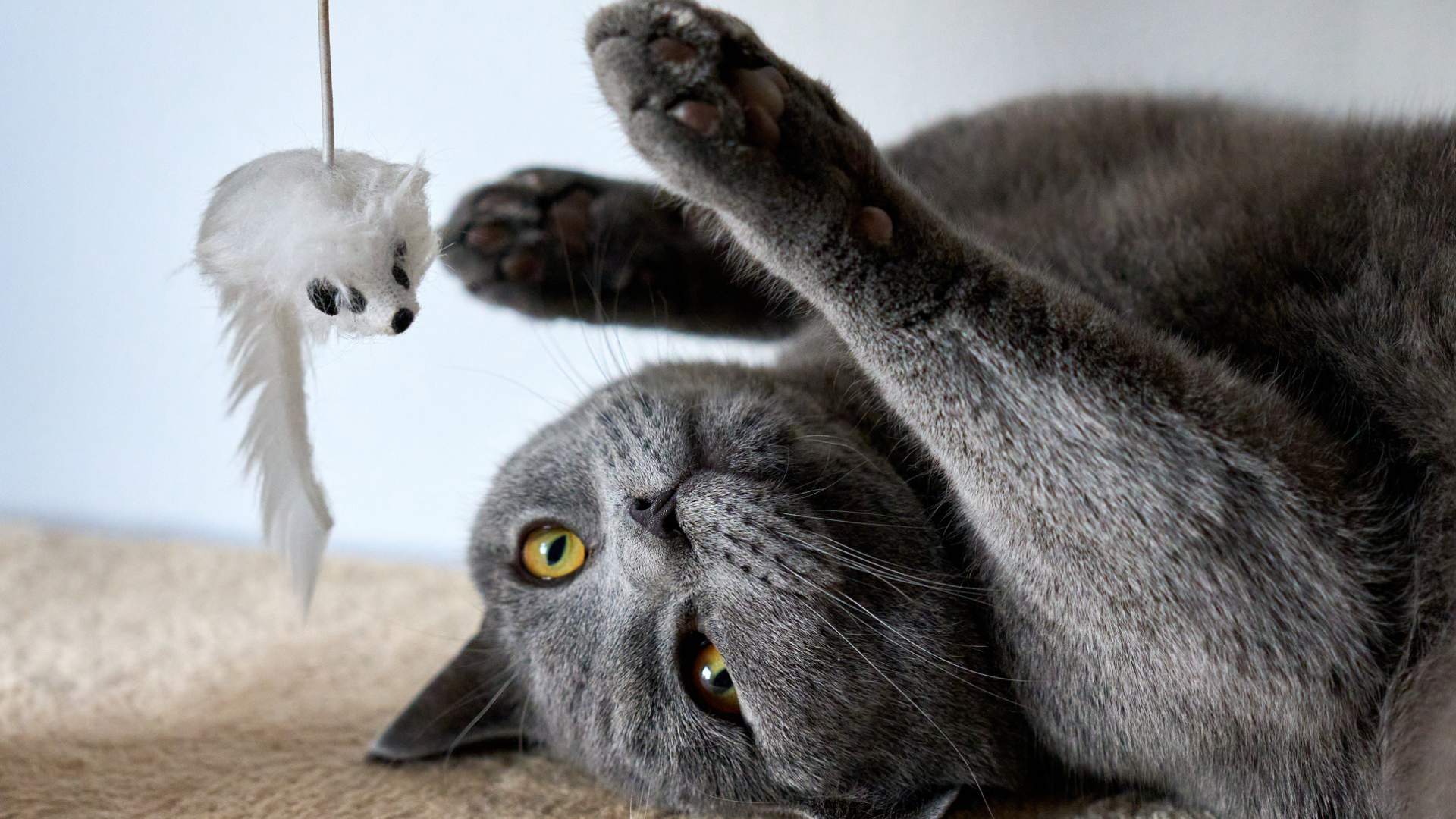
5. Leave out some cat-specific furniture
We highly recommend purchasing one of the best cat scratching posts if you haven’t already got one. These are great for giving your kitty a good stretch and keeping their nails in tip-top condition, plus many come with toys attached, so they can play at the same time.
If you’d like to cut down on the amount of cat-related items you have around your home, a cat tree is well worth investing in. These tend to come with built-in scratching posts, toys, perches and even the best cat bed, so they’re a great way of killing four or five birds with one stone.
6. Set up a pet camera
The best pet cameras are a real lifesaver when it comes to enabling you to check in on your kitty while you’re away from home. Because most of them come with a two-way audio feature, you’ll even be able to converse with your cat and let them hear your voice. It’s worth shopping around before you buy and giving some thought to what kind of camera you’d like. You’ll find that some come with a treat dispenser while others feature a laser, both of which can be super fun for your feline pal.
Most kitty parents might be wondering, ‘why does my cat bring me toys?’ If that’s the case, discover the most common reasons why this could be. Also be sure to check out Why do cats pant after playing for every more feline info! Or, read 'Are lasers pointers bad for cats?' and 'how cats play with each other?'

Kathryn is a freelance writer who has been a member of the PetsRadar family since it launched in 2020. Highly experienced in her field, she's driven by a desire to provide pet parents with accurate, timely, and informative content that enables them to provide their fur friends with everything they need to thrive.
Kathryn works closely with vets and trainers to ensure all articles offer the most up-to-date information across a range of pet-related fields, from insights into health and behavior issues to tips on products and training.
When she’s not busy crafting the perfect sentence for her features, buying guides and news pieces, she can be found hanging out with her family (which includes one super sassy cat and a kitten), drinking copious amounts of Jasmine tea and reading all the books.
She has written for a range of publications, including Fit&Well, Top Ten Reviews, LiveScience, Goodto, and Product Hunt.
- Megan MilsteadStaff Writer
